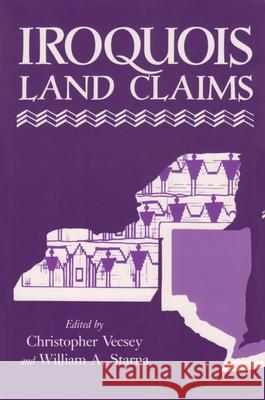Iroquois Land Claims » książka
Iroquois Land Claims
ISBN-13: 9780815602224 / Angielski / Miękka / 1988 / 198 str.
The landmark Oneida Supreme Court decisions of 1974 and 1985 testify to the fact that the Iroquois' day in court has finally arrived. Although Indian petitions to regain their shrinking land base have generally caught the non-Indian public by surprise, land rights have been an issue for the Iroquois for the past two-hundred years. This book provides a balanced appraisal of the land claims made by several of the Iroquois tribes. By drawing upon the viewpoints of those who have a direct stake in the land claims' outcome-Iroquois, attorneys representing or defending against the claims, expert witnesses-and those who have extensive knowledge of the controversy, this book reveals the complexity of the issues. While there is no easy way to resolve these claims, the uniquely qualifies contributors stress that a negotiated settlement is preferable to a litigated one. The fact that these cases have had to be brought to court, even to the Supreme Court, is evidence of the seriousness of the issues involved. This book strikes a balance among the various parties to the land disputes, proving an invaluable resource to academics, students, legal professionals, policymakers, and the public at large.
The landmark Oneida Supreme Court decisions of 1974 and 1985 testify to the fact that the Iroquois day in court has finally arrived. Although Indian petitions to regain their shrinking land base have generally caught the non-Indian public by surprise, land rights have been an issue for the Iroquois for the past two-hundred years.This book provides a balanced appraisal of the land claims made by several of the Iroquois tribes. By drawing upon the viewpoints of those who have a direct stake in the land claims outcome-Iroquois, attorneys representing or defending against the claims, expert witnesses-and those who have extensive knowledge of the controversy, this book reveals the complexity of the issues.While there is no easy way to resolve these claims, the uniquely qualifies contributors stress that a negotiated settlement is preferable to a litigated one. The fact that these cases have had to be brought to court, even to the Supreme Court, is evidence of the seriousness of the issues involved.This book strikes a balance among the various parties to the land disputes, proving an invaluable resource to academics, students, legal professionals, policymakers, and the public at large.











